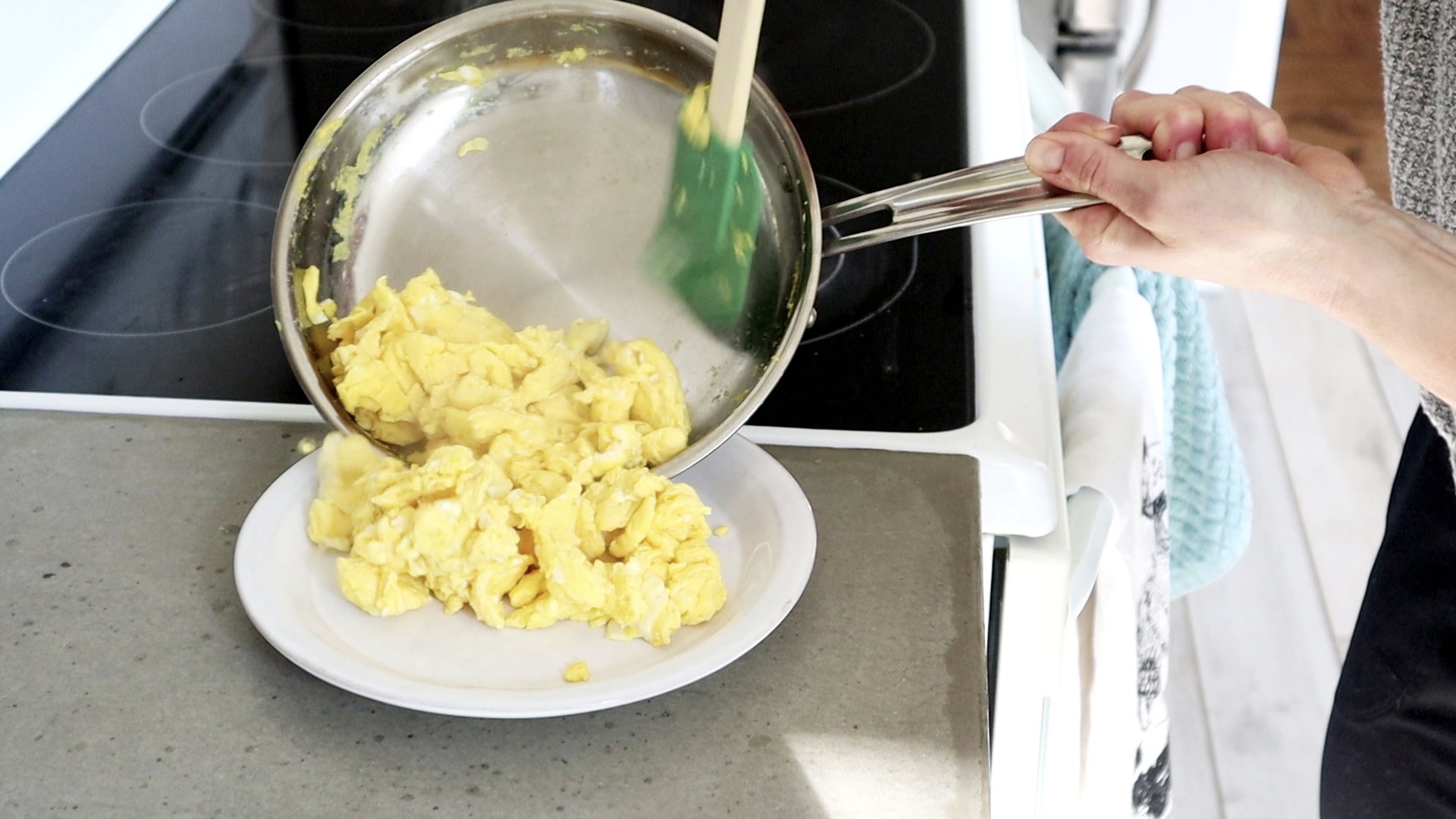Make Your Stainless-Steel Skillet NON-STICK!
Did you know you could do that? I sure didn’t. If this idea interests you, read on for the HOW TOs from Lisa McManus (executive editor at America’s Test Kitchen, ATK). She says, “A simple science trick makes food not stick in a steel pan. The secret’s in a drop of water.”
The ATK pros have promoted stainless-steel skillets for many years. They like these because they consistently and perfectly achieve uniform browning and developing fond (a base—the browned bits of food in a pan after food has been roasted or sautéed) and can transition seamlessly from stovetop to oven.

Also, with recent concerns over PFAS in nonstick skillets, the stainless steel skillet’s popularity is only growing.
But a common complaint for those new to cooking in stainless steel is that food can stick, and the pans can require heavy-duty scrubbing to get clean.
That said, there’s a really easy way to make your stainless-steel skillet act more like a nonstick pan. Lisa assures us that if we follow this method, we can even cook delicate foods such as eggs or fish, and they won’t stick.

This easy method is based on a scientific principle called the “Leidenfrost Effect.” Here’s how to do it:
- Preheat your pan on medium for 2 to 4 minutes.
- Have a bowl of tap water handy; flick on a few water droplets onto the preheated skillet. If they sit there, the pan’s still too cold. If they evaporate immediately, it’s too hot (in which case you’ll want to turn the heat down slightly). When they roll and skitter around like balls, the pan is ready.
- Add fat and food, and voilà! No sticking.
I read this information twice, and thought, “WHAT?? That’s it?” Yes. And here’s why this method works: “Steam is pushing your food off the surface,” explained Michael Tarkanian, senior lecturer in MIT’s Department of Materials Science and Engineering. It’s that simple, and that’s the Leidenfrost Effect.

At a certain temperature range well above boiling—about 365 to 379 degrees Fahrenheit—the water in food evaporates and the steam lifts food off the steel surface so that it floats like an air hockey puck. That layer of steam remains trapped beneath the food, which prevents it from sticking. At the same time, the steam layer insulates food from the hot metal, which prevents the food from burning.
“When you hit the right temperature you’re making a little air gap there,” Tarkanian said. “Water is not in good contact with the pan anymore, which is why it skitters around the surface.” Flicking a few droplets of water into the skillet demonstrates the Leidenfrost Effect; steam is lifting the droplets of water off the surface of the skillet the same way it will with food.

Adding food too soon (before the water beads up) means that there isn’t that protective air gap created by rising steam and will result in the dreaded caked-on food that seems impossible to scrub off.
The ATK researchers tried using this technique with omelets, fish, meats, and more, and as Lisa reports, it really works. NO stuck-on food and their clean-up was zippy quick. Let’s try it and compare notes!
 Alice Osborne
Alice Osborne
DVO Newsletter Contributor since 2006
Email the author! alice@dvo.com
Sources:
- www.americastestkitchen.com
- www.wikipedia.com
- www.oakabode.com
